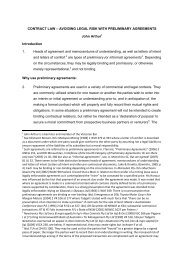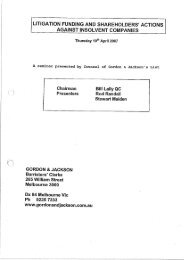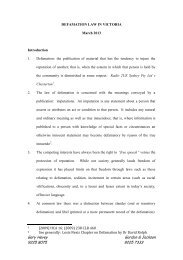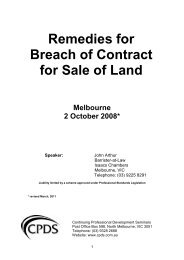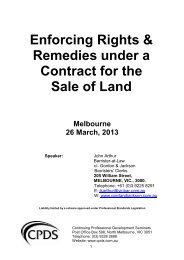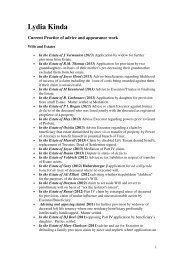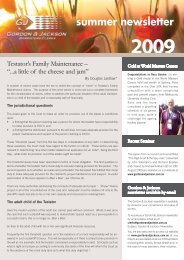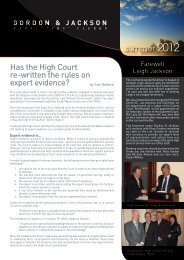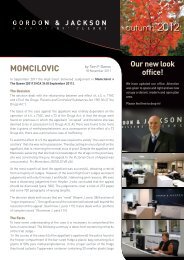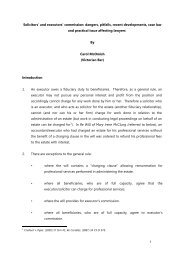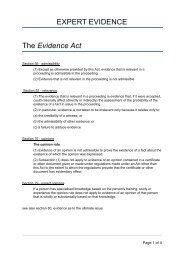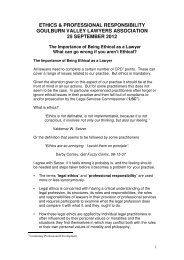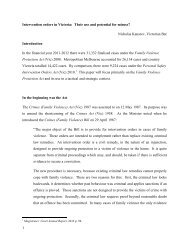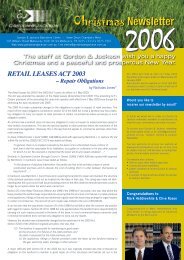here - Gordon & Jackson
here - Gordon & Jackson
here - Gordon & Jackson
You also want an ePaper? Increase the reach of your titles
YUMPU automatically turns print PDFs into web optimized ePapers that Google loves.
"Findings on expert evidence<br />
89. Mr Hawchar, when using an angle grinder in the employment of Dasreef, was<br />
frequently exposed to high concentrations of dust, which exceeded the maximum<br />
time weighted average of 0.2 mg/m3 for one week mandated by the WorkSafe<br />
Australia standard."<br />
Both the majority judgment of French CJ, Gummow, Hayne, Heydon, Crennan, Kiefel and<br />
Bell JJ and the dissenting judgment of Heydon J found that Dr Basden's speculative<br />
opinions as to exposure levels (or "guesstimates", as Dr Basden called them) ought not have<br />
been admitted in to evidence, and thus that the judge's finding above was unsupported by<br />
any admissible evidence. They were also critical of the trial judge for not making a ruling as<br />
to the admissibility or otherwise of the evidence during the trial. The trial judge had allowed<br />
Dr Basden to be cross-examined as on a voir dire (that is, in order to determine whether his<br />
evidence ought be admitted) but had not then made any ruling on admissibility, instead<br />
reserving the issue and publishing his decision as to admissibility in his final reasons.<br />
Appellate courts have warned in the past of the need for timely evidentiary rulings by their<br />
trial judge counterparts so this aspect of the decision is not really new, although when a<br />
unified High Court speaks in strong terms it behoves trial judges (and those who appear<br />
before them) to sit up and take notice.<br />
But the more interesting part of the decision as a precedent in future cases is the application<br />
by the majority of section 79, and the reason that the majority gave for the evidence being<br />
inadmissible. It was common ground that the words of section 79 did not expressly refer to<br />
the common law requirements 4, 5 and 6 above, and the argument centred in large part on<br />
whether the section had or had not relaxed the common law requirements for admissibility of<br />
expert evidence.<br />
Against that background the majority said that because Dr Basden had no training, study or<br />
experience of the actual level of sandstone particles to which Mr Hawchar was exposed his<br />
"guesstimate" of the exposure levels was inadmissible. They expressly stated that this<br />
finding was not an application of the common law rules 4, 5 and 6 above (proof of underlying<br />
facts, underlying assumptions and explanation of reasoning, collectively the so-called "basis<br />
rule"), but simply an application of the words of section 79 itself.<br />
Page 12 of 31



